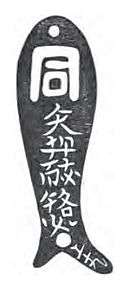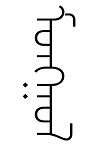Mongolian writing systems
Many alphabets have been devised for the Mongolian language over the centuries, and from a variety of scripts. The oldest, called simply the Mongolian script, has been the predominant script during most of Mongolian history, and is still in active use today in the Inner Mongolia region of China and de facto use in Mongolia. It has in turn spawned several alphabets, either as attempts to fix its perceived shortcomings, or to allow the notation of other languages, such as Sanskrit and Tibetan. In the 20th century, Mongolia first switched to the Latin script, and then almost immediately replaced it with the Cyrillic script for compatibility with the Soviet Union, its political ally of the time. Mongol Chinese in Inner Mongolia and other parts of China, on the other hand, continue to use alphabets based on the traditional Mongolian script.
In March 2020, the Mongolian government announced plans to use both Cyrillic and the traditional Mongolian script in official documents by 2025.[1][2][3]
Precursors

The Xianbei spoke a proto-Mongolic language and wrote down several pieces of literature in their language. They are believed to have used Chinese characters to phonetically represent Xianbei like the Japanese system of Man'yōgana but all works written in Xianbei are now lost.
The Khitan spoke a Proto-Mongolic language called Khitan language and had developed two scripts for writing their language: Khitan large script and Khitan small script, logographic scripts derived from Chinese characters.
Classic Mongolian script


Traditional alphabet
At the very beginning of the Mongol Empire, around 1204, Genghis Khan defeated the Naimans and captured a Uyghur scribe called Tata-tonga, who then adapted the Uyghur alphabet—a descendant of the Syriac alphabet, via Sogdian—to write Mongol. With only minor modifications, it is used in Inner Mongolia to this day. Its most salient feature is its vertical direction; it is the only vertical script still in use that is written from left to right. (All other vertical writing systems are written right to left.) This is because the Uyghurs rotated their script 90 degrees anticlockwise to emulate the Chinese writing system.[4][5]:36
As a variant of the traditional script there exists a vertical square script (Босоо дөрвөлжин), also called folded script, used e.g. on the Mongolian banknotes.
Galik alphabet
In 1587, the translator and scholar Ayuush Güüsh created the Galik alphabet, inspired by Sonam Gyatso, the third Dalai Lama. It primarily added extra letters to transcribe Tibetan and Sanskrit terms in religious texts, and later also from Chinese and Russian. Later some of these letters officially merged to traditional alphabet as group named "Galig usug" to transcribe foreign word in today's use.

Todo alphabet
In 1648, the Oirat Buddhist monk Zaya Pandita created this variation with the goal of bringing the written language closer to the actual Oirat pronunciation, and to make it easier to transcribe Tibetan and Sanskrit. The script was used by Kalmyks of Russia until 1924, when it was replaced by the Cyrillic alphabet. In Xinjiang, China, the Oirats still use it.
'Phags-pa script (Square script)

The traditional Mongolian alphabet is not a perfect fit for the Mongolian language, and it would be impractical to extend it to a language with a very different phonology like Chinese. Therefore, during the Yuan Dynasty (ca. 1269), Kublai Khan asked a Tibetan monk, Drogön Chögyal Phagpa, to design a new script for use by the whole empire. Phagpa extended his native Tibetan script to encompass Mongolian and Chinese; the result was known by several descriptive names, such as the Mongolian new script, but today is known as the 'Phags-pa script. The script did not receive wide acceptance and fell into disuse with the collapse of the Yuan dynasty in 1368. After this it was mainly used as a phonetic gloss for Mongols learning Chinese characters. However, scholars such as Gari Ledyard believe that in the meantime it was the source of some of the basic letters of the Korean hangul alphabet.
Soyombo script

The Soyombo script is an abugida created by the Mongolian monk and scholar Bogdo Zanabazar in the late 17th century, that can also be used to write Tibetan and Sanskrit. A special glyph in the script, the Soyombo symbol, became a national symbol of Mongolia, and has appeared on the national flag since 1921, and on the national coat of arms since 1992, as well as money, stamps, etc.
Zanabazar had created it for the translation of Buddhist texts from Sanskrit or Tibetan, and both he and his students used it extensively for that purpose. Aside from historical texts, it can usually be found in temple inscriptions. It also has some relevance to linguistic research, because it reflects certain developments in the Mongolian language, such as that of long vowels.
Horizontal square script

At around the same time, Zanabazar also developed the horizontal square script (Хэвтээ дөрвөлжин), which was only rediscovered in 1801. The script's applications during the period of its use are not known. It was also largely based on the Tibetan alphabet, read left to right, and employed vowel diacritics above and below the consonant letters.[6] Additionally, a dot was used below consonants to show that they were syllable-final.
Horizontal square script is included in the Unicode Standard under the name "Zanabazar Square". The Zanabazar Square block, comprising 72 characters, was added as part of Unicode version 10.0 in June 2017.[7]
Foreign scripts
Before the 13th century, foreign scripts had to be used to write the Mongolian language . And even during the reign of the Mongol Empire, people in the conquered areas often wrote it in their local systems. Most often it was transcribed phonetically using Chinese characters, as is the case with the only surviving copies of The Secret History of the Mongols. Subjects from the Middle East hired into administrative functions would also often use Perso-Arabic script to write their Mongolian language documents.
Latin script
On 1 February 1930, Mongolia officially adopted a Latin alphabet. On 25 March 1941, the decision was reversed. According to later official claims the alphabet had turned out to have not been thought out well. It was said not to distinguish all the sounds of the Mongolian language, and to be difficult to use. However, those seem to have been pretexts rather than the true reasons. Using "y" as feminine "u" /u/, with additional feminine "o" ("ө") /ɵ/ and with additional consonants "ç" for "ch" /tʃ/, "ş" for "sh" /ʃ/ and ƶ for "zh" /dʒ/, it successfully served in printing books and newspapers. Many of the Latin letters (f, h, p, v) were even rarely used while q, w and x were completely excluded. The adoption of the Cyrillic script a short time later, almost simultaneously with most Soviet republics, suggests political reasons. In the advent of the Internet, people who use social networking services prefer typing in the Latin script for the ease of typing compared to the Cyrillic script, using the orthography introduced in 1939.[8]
Cyrillic script
The most recent Mongolian alphabet is a based on the Cyrillic script, more specifically the Russian alphabet plus the letters, Өө ö and Үү ü. It was introduced in the 1940s and has been in use as the official writing system of Mongolia ever since.
In March 2020, the Mongolian government announced plans to use both Cyrillic and the traditional Mongolian script in official documents by 2025.[1][2][3]
See also
- Mongolian language
- Mongolian script
- ʼPhags-pa script
- Horizontal square script
- Soyombo script
- Mongolian Latin alphabet
- Mongolian Cyrillic alphabet
- Mongolian transliteration of Chinese characters
- Sino–Mongolian Transliterations
- Mongolian Braille
- Mongolian Sign Language
- Mongolian name
References
- "Mongolia to promote usage of traditional script". China.org.cn (March 19, 2020).
- Official documents to be recorded in both scripts from 2025, Montsame, 18 March 2020.
- Mongolian Language Law is effective from July 1st, Gogo, 1 July 2015. "Misinterpretation 1: Use of cyrillic is to be terminated and only Mongolian script to be used. There is no provision in the law that states the termination of use of cyrillic. It clearly states that Mongolian script is to be added to the current use of cyrillic. Mongolian script will be introduced in stages and state and local government is to conduct their correspondence in both cyrillic and Mongolian script. This provision is to be effective starting January 1st of 2025. ID, birth certificate, marriage certificate and education certificates are to be both in Mongolian cyrillic and Mongolian script and currently Mongolian script is being used in official letters of President, Prime Minister and Speaker of Parliament."
- György Kara, "Aramaic Scripts for Altaic Languages", in Daniels & Bright The World's Writing Systems, 1994.
- Janhunen, Juha (2006-01-27). The Mongolic Languages. Routledge. ISBN 978-1-135-79690-7.
- Pandey, Anshuman (2015-12-03). "L2/15-337: Proposal to Encode the Zanabazar Square Script in ISO/IEC 10646" (PDF). ISO/IEC JTC1/SC2/WG2.
- "Unicode 10.0.0". Unicode Consortium. June 20, 2017. Retrieved June 21, 2017.
- "Russian Influence in Mongolia is Declining". Global Security Review (March 2, 2019).
External links
![]()
- The Silver Horde: Mongol Scripts
- The Mongolian language and scripts, Tseveliin Shagdarsuren, Indiana University
- Inkway Mongolian Calligraphy
